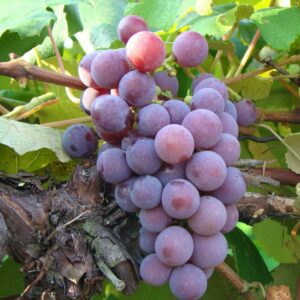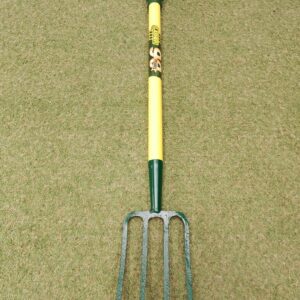Olive Trees: Mediterranean Magic
Trees, hedges and borders

Find out how to grow olives – one of the essential ingredients of any Mediterranean dish.
No self-respecting Mediterranean chef would be without olives in his dishes! For gardeners in those parts of the country which offer the ideal conditions for growing olives, this easy-to-grow tree is a must.
Olive trees are highly attractive with their silvery leaves and gnarled trunks. So, even if the climate in your region precludes the olive from bearing fruit, its graceful, billowing appearance and silvery foliage make the tree highly ornamental.
All modern olive cultivars are derived from one original olive species, Olea europaea. They grow fast, reaching at maturity a height of 16m with a spread of 10m. However, they can be pruned to whatever size is desired. In small gardens an olive tree will thrive in a container. Olive trees can survive droughts and strong winds, and tolerate salt water conditions. In addition, olives are more resistant to diseases and insects than any other fruit tree and require less spraying than any other crop. Newly planted trees bear fruit after about four years.
Temperature is the most important factor affecting the bearing of fruit. The olive requires a climate where there are no late spring frosts to kill the blossoms, a long, hot growing season to properly ripen the fruit, and sufficient winter chill to initiate flower development – maximum day temperatures in June and July should not exceed 21°C. A frost-free climate is ideal, as green fruit is damaged at about -2°C. Ripe fruit will withstand somewhat lower temperatures. Hot, dry winds may be harmful during the period when the flowers are open and the young fruits are setting.
In cold gardens, the olive can be grown as a non-fruit bearing ornamental tree provided winter temperatures do not drop below -7°C. Alternatively, plant the indigenous wild olive, Olea europaea subsp. africana, which is just as attractive as the fruit-bearing cultivars and more readily available.
A bountiful harvest
If you intend to grow an olive for its fruits consider the following:
- Choose the right cultivar. Check if the cultivar you like will self pollinate.
- Location. Plant olives in full sun and away from spring winds.
- Soil. Olives grow best in soil that drains well, such as gravely or stoney soils. They do best in soils with a pH of 6,5, but tolerate alkaline soils with a pH of up to 8,5.
- Plant correctly. Plant in a large, deep, compost-filled hole. Set a 1m piece of pipe with a diameter of at least 7cm into the hole with about 15cm positioned above the ground so that you can water the roots of the olive directly.
- Staking. Stake the tree while young to keep it straight.
- Water regularly. Regular watering during dry periods is necessary for the production of high quality fruit. Water young trees deeply once a week and established trees once a month. Water container-grown olives once a day during hot weather.
- Fertilise regularly. During spring and summer, young trees require 30g of a nitrogen-rich fertiliser every month in their first year, 60g every month in their second year and 100g every month in their third year. From the fourth year, top-dress with about half-a-kilogram of balanced fertiliser per tree, applied twice a year in spring and summer, together with a wheelbarrow-load of rich compost.
- Prune in winter. Keep pruning to a minimum in the first four years before the tree bears fruit. Only remove those branches which are in the way of others, or growing too near the soil surface. When the leading shoot it is 1,5m tall cut it back to 1m. Then select four to six strong lateral branches to provide the basic framework and remove all the others. Buds will sprout from these laterals in spring and grow into long slender twigs by winter. The following spring blossoms will appear along these twigs and form olives in late summer. These young branches will produce buds for new wood, but they will not flower or bear olives again. So, after harvest, prune back any wood that produced olives and keep branchlets that did not blossom and produce olives. To shape to a single trunk, prune suckers and any branches growing below the desired branching point. Olive trees can also be pruned to espaliers.
- Thin fruit. Thinning the crop as soon as fruits appear will give larger fruit size.
Did you know? – Olive trees are one of the most important fruit trees in history. The medical properties of olive oil were first reported by the ancient Greeks, and their value in providing nutritional benefits and wealth for citizens of the Mediterranean counties continues today, with most of the world olive oil supply coming from these countries.
Olive cultivars
- ‘Kalamata’ – the best black table olive, of medium size (5-7g), bears well.
- ‘Nocellara del Belice’ – new Italian cultivar, green, with a large size of 6-8g.
- ‘Mission’ – suitable for bottling, medium size (5-7g).
- ‘Manzanilla’ – green table olive, medium size (5-7g), small pip and thick flesh.
- ‘Barouni’ – green table olive, large (6-8g)
You might also like
Shop online
-
- Sale!
POT COVER CERAMIC EVA MERLOT LASUR 16.5 CM
- Original price was: R399.99.R279.99Current price is: R279.99.
- Add to cart Learn More
-
GRAPE CATAWBA 20kg
- R699.99
- Add to cart Learn More




